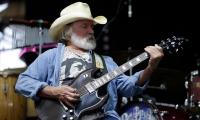The first phase of the US presidential elections has come to a close, with the months leading up to November set to see a pitched battle between Hillary Clinton and Donald Trump.
Despite the prospect of America making history – on one side choosing a female commander-in-chief and on the other a reality TV star – the biggest headline of the primaries has the been the rise of the ‘Independent’ voter and the evident weakness of the two-party American political system.
In the postmodern world, with the fluidity of identity, there is a yearning for political alternatives, a wave that is playing out across the US. The trend of rising Independents and decline of Democratic voters was earlier indicated by a Pew Research Centre report in 2014, which showed that during the middle of the Obama regime, 39 percent voters identified themselves as Independents, while Democrats accounted for 32 percent and Republicans at 23 percent of voters.
Fast forward to 2016 and the national Gallup poll, which emerged just a few weeks before the primary race in February showed that 42 percent of voters identified themselves as Independent voters, 29 percent as Democrats and 26 percent as Republicans. According to the polling agency, Independent identification has been above 40 percent for the last five years, breaching the mark back in 2011 towards the end of Obama’s first term. In fact, Obama’s second term has left the percentage of voters identifying as Democrats at the lowest point in the past 27 years, maintaining just a slim margin over the Republicans.
The Gallup report also highlights that a key factor behind voter migration is the policy gridlock in the US Congress. This was a significant aspect of Obama’s last years as president as he faced off against a Republican-controlled Congress. To the dismay of Democrats, even though Obama championed key social legislation through executive orders, neither his party not Hillary Clinton got any political advantage from that.
The report gives credence to the rise of Bernie Sanders and Donald Trump as political juggernauts in the presidential race. They are outsiders, a veteran senator and a self-styled right-winger, harnessing the strength of voters estranged from the two-party system. Both leaders are no veterans of any party and simply sought their nod for the presidential nomination. Bernie Sanders is the longest serving Independent member of Congress in American history while Donald Trump has changed political parties at least five times since the 1980s and struck oil with his carefully calibrated political pitch to the right-wing voter base.
Even as the attrition rate of voters is marginally higher in the Republican camp, support for the two parties among Independent voters is a dead heat. The Gallup poll study reveals that out of 42 percent voters who identified as Independents, 16 percent leaned towards the Democrats, while another 16 percent leaned towards the Republicans. Yet, the democratic advantage becomes clear where Bernie Sanders failed to secure traditional Democratic vote banks.
Sanders may have given Hillary a tough fight, even forcing her to realign the narrative of her campaign, yet she soared unchallenged in the delegate-count to become the presumptive Democratic candidate. Trump meanwhile was undisputed in the race for the Republican nomination. He was miles ahead of every traditional Republican leader as well as party veterans who all bowed out of the contest.
The advantage of the Democrats is simply a reflection of the evolution of the polity of the US, where there is greater public support and respect for social justice issues which the Democrats have traditionally championed. Nonetheless, this ‘advantage’ is a far cry from the popularity the party enjoyed in the George Bush era, where it sustained a comfortable 12 point advantage in multiple voter identification polls.
One major implication of rising Independent voters rallying behind Sanders and Trump is the polarisation of the political narrative. Sanders’ ‘political revolution’ for universal rights and tackling income inequality was met by Trump’s hate speech, which has galvanised the Republican fringe. This has pushed both parties to eye both ends of the spectrum for political support, as Independents edge themselves into the league of traditional vote banks.
Yet, the effect is different for both parties. Independents have pushed the Democrats to get in touch with their social justice ethos and base, connecting the party to the positive sentiment emerging from President Obama’s policy breakthroughs in his last months in office. However, for the Republicans, Trump’s vitriol and zero policy focus has rallied a major section of Independent and Republican voters, but has crippled the party’s credibility for years to come. No international leader can imagine dealing with Trump to decide the fate of the free world.
In the months leading to the election in November, Trump’s narrative is likely to unravel in a face-to-face confrontation with Hillary Clinton. On a pan-America stage facing voters of all political leanings, the real-estate magnate’s venomous campaign and lack of administrative experience is set to crumble before Hillary Clinton. It will be a suitable leader versus a downright embarrassment. Trump’s position at the helm of the GOP is likely to push the ‘Democrat-leaning’ Independents into the party’s fold – and it may even surpass the popularity boost delivered by George Bush’s presidency.
Independent voters have proven to be a force to reckon with. They have granted a lesson to the Democrats to get in touch with their ideological centre and made Trump a political rock star. Yet, they have torpedoed the Republican Party’s image and exposed the political bankruptcy of their leadership.
The writer is senior news editor at CNN-News18.
Email: ayushmanjamwal@gmail.com
Twitter: @Jamwalthefirst
A woman walks past a building of the International Monetary Fund. — AFP/FileThe annual and spring meetings of the...
Late Benazir Bhutto's daughter Asifa Bhutto Zardari addresses the Christian community in Bihar Colony on January 23,...
Representational image. — PexelsWater is an important scarce natural resource that is required for several everyday...
Pakistani employees of online marketplace company Kaymu at work in Karachi. — AFP/FileThe true spirit of development...
India uses Afghanistan as a backstage area to carry out terrorist attacks against Pakistan
Another report by the Pakistan Institute of Peace Studies states that 78 per cent of attacks have been carried out by...







